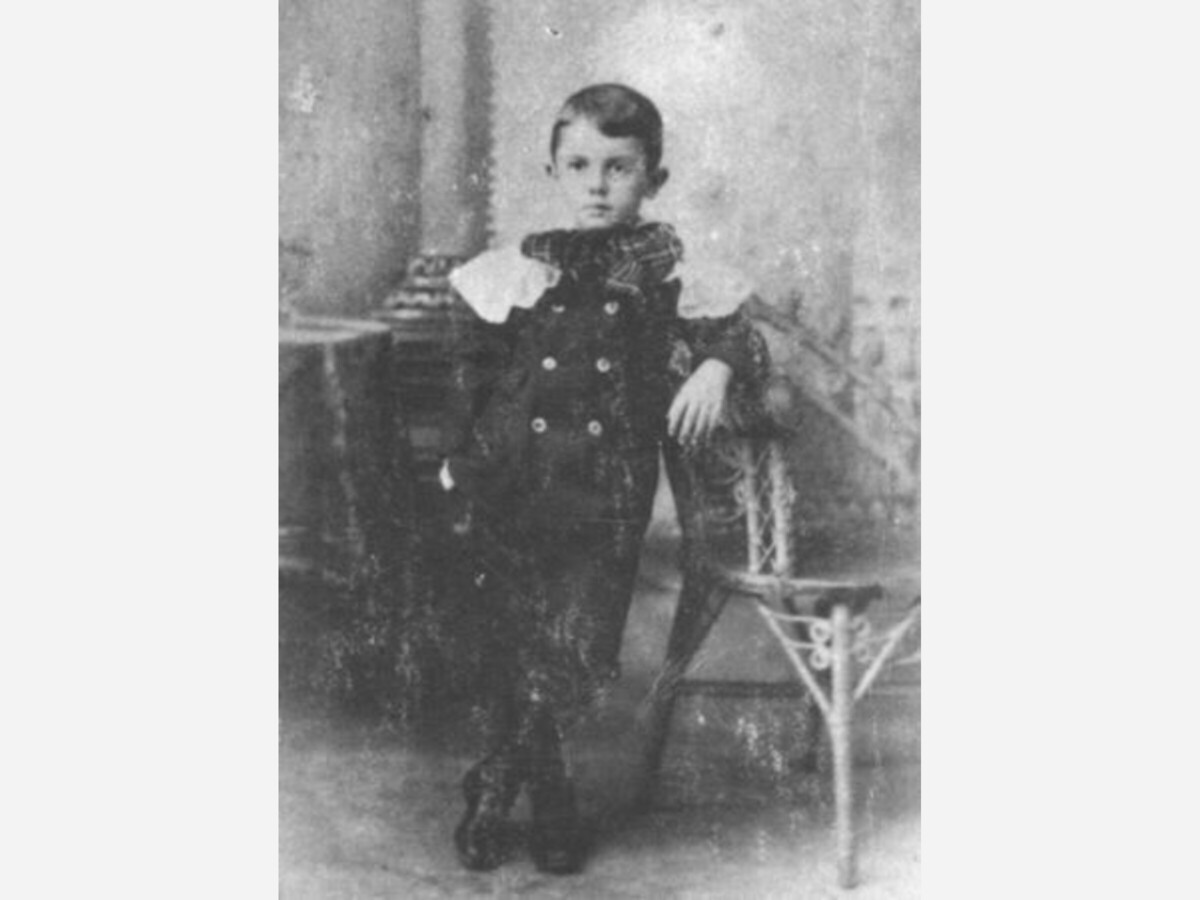Image

Above, an image of Stanley Grant Chilson as a boy, from the cover of James C. Johnston's "Odyssey in the Wilderness: A History of the Town of Franklin."
[EDITOR"S NOTE: The article below was submitted partly in response to our inadequate attempt to do justice to the work and career of Stanley Chilson in a Hometown History column. Mr. Johston, corrects and enlarges...]
By James C. Johnston Jr.
Re.: Stanley Grant Chilson
I knew Stanley Grant Chilson from 1958 until his death about fifty years ago in 1972. We were both interested in Sandwich and Art Glass and antiques of every sort. When he stopped driving his car, because of his deteriorating eyesight, I used to drive him around. We just liked to look at stuff, and he would tell me all about the personalities who had inhabited the Franklin of his youth. As two Yankee guys, we knew many of the same living people, but there was a whole world of “sometimes semi-bizarre characters I had never met like a certain Old Scot who owned a great deal of land about town named Alex Haggard who shared a lot of characteristics with the Disney character Scrooge Mc Duck.
Stanley was a well-educated engineer who discovered that he had a heart murmur when he was called to duty in World War I. In all of the many decades I knew and was friends with Stanley and his sister, Grace Buchanan, I never heard him called by any nick-name such as “Chilly” by anybody including his cousin, Walter Chilson, or any other member of his family. Everybody called Stanley “Stanley.”
Stanley was an engineer for as long as he felt like being an engineer. When he decided to give up that “line of work”, as he called that phase of his career, he threw himself into the field of being, among other things, a “Photo-grapher”, and that was the distinctive title he used for the rest of his life, because that is the way the “Old-Time Photo-graphers” referred to themselves in the context of their profession. And Stanley was proud of his profession as a “photo-grapher”, and consequently we spent a lot of time talking about it. As far as Stanley having regular employment, his family owned dozens of apartments and other rental properties in town including most of Charlotte Court. He also was his mother’s, Mrs. Austin B. Chilson’s, business partner in her extensive dealings in antiques and rare Sandwich and Art Glass. Stanley was very busy indeed working way beyond a forty-hour week.
His entry into the glass business was a kind of funny event. One day his mother said, “Stanley. I want you to drive me down the Cape in an hour or so. We have some business down there.”
By one-thirty P.M. after lunch at the Daniel Webster Inn, Stanley and his mother arrived at the home and emporium of Hulda Howes, a legend in the antique business, and a great lady that I was also fortunate to do business with years later. Hulda was an age-less whirl-wind of total energy who always amazed me. Mrs. Chilson proceeded to buy-out about half of Hulda’s stock of Lacey Sandwich Glass. Then she turned to Stanley and said, “Would you write out a check for Hulda in payment for the Glass.”
Stanley wrote out the required check, and handed it over to Hulda, and then proceeded to the task of helping Hulda with the job of packing up the glass. When crossing the Bourne Bridge on the trip back to Franklin, Mrs. Chilson turned to Stanley with a big smile and said, “Congratulations on your first buy as a glass dealer!”
To this day, I still own some of that purchase that Stanley later sold to me while smiling and saying, “Yep! One born every minute!”
In addition to being the family estate agent, photo-grapher of weddings and all domestic events, and area-wide fires, dealer in glass and antiques, Stanley also caught the whole social history of the town on moving picture film from about 1928 into the early 1960’s when his eyesight began to decline a bit and then quickly. These wonderful films he shot were shown to raise funds for paying for repairs of damage done by the Great Hurricane of 1938 which was a massive weather-event of such intensity and force that it even destroyed Katherine Hepburn’s ocean-side Rhode Island Estate, as well as, the Franklin Baptist Church which forced the Baptists to move-in with the Franklin Congregational Church which resulted in the formation of The “Franklin Federated Church” in that self-same year 1938!
The first vague memory I personally have of Stanley Chilson is when “Franklin’s Photo-grapher” took my first grade class picture at the Ray School in 1950! I doubt if that meeting would ever have registered as an event of significance for either of us. As I said, Stanley photographed the whole social history of the town in hundreds of thousands of images over a period of many decades. He was among the hardest working, self-employed-entrepreneurs ever to inhabit the place.
Stanley was very generous with his films. For years he loaned me his prints to show as “Local History” to students in the Franklin Public Schools and for The Stanley Chilson Film Festival which I ran as Chairman of The Franklin Federal Bicentennial Commission from 1975-1978. Thanks to Stanley Chilson, thousands of people were exposed to the unique and vital social history of the City known as The Town of Franklin.
James C. Johnston Jr. is a former Franklin selectman, Franklin High School history teacher, and author. Article copyright James C. Johnston, Jr. 2022, used with permission